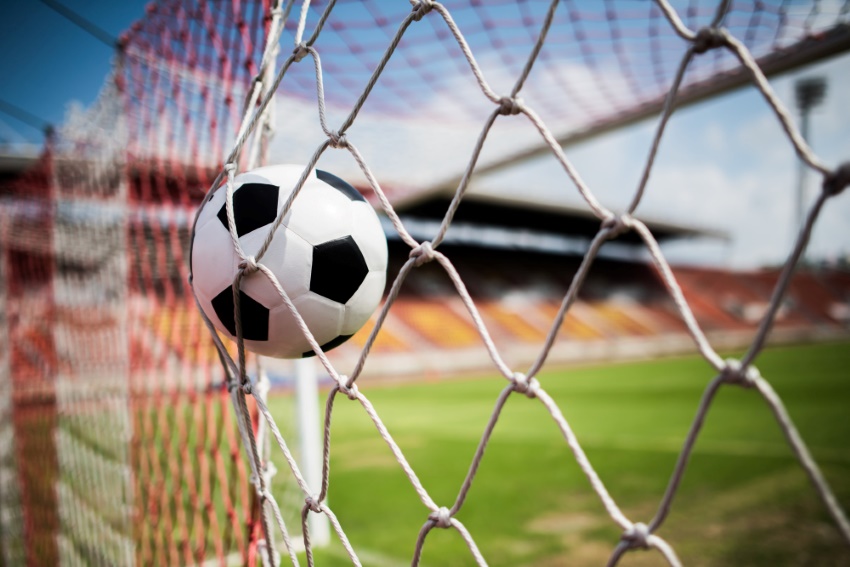A Deep Dive into Soccer Ball Research and Development: Advancements in Manufacturing
How Soccer Ball Research and Development Shapes the Future
The world of soccer is constantly evolving, not just in terms of player techniques and strategies, but also in the technology behind the very tool that defines the sport—the soccer ball. Behind the scenes, extensive research and development efforts have revolutionized the manufacturing process, resulting in balls that offer enhanced performance, durability, and consistency on the field.
Table of Contents
ToggleSoccer is the most popular sport in the world, with over 4 billion fans and players who enjoy the thrill and excitement of the beautiful game. At the heart of soccer lies the soccer ball, the essential component that determines the quality and performance of every match. But how are soccer balls made, and what are the latest innovations and trends in soccer ball manufacturing?
Exploring the Evolution of Soccer Balls
The history of the soccer ball is a tale of ingenious craftsmanship and relentless innovation. From the early days of leather-covered spheres to the high-tech, precision-engineered balls of today, the soccer ball has evolved to meet the demands of the game and the expectations of players.
Traditional Leather Balls:
The earliest soccer balls were made from leather panels stitched together. These balls were heavy, waterlogged, and prone to losing their shape. However, they offered a natural feel and bounce that resonated with players.
The Introduction of Synthetic Materials:
Synthetic materials such as polyurethane, polyvinyl chloride (PVC), and thermoplastic polyurethane (TPU) have become the norm. These materials offer increased durability, better water resistance, and consistent performance across various weather conditions.
In the 1950s, synthetic materials like polyurethane and PVC began to revolutionize soccer ball manufacturing. These materials were lighter, more durable, and less susceptible to moisture. The introduction of synthetic materials allowed for mass production and made soccer balls more affordable and accessible.
The Advent of Aerodynamics:
In the 1970s, aerodynamic considerations became paramount in soccer ball design. Scientists and engineers studied the airflow around the ball to develop designs that reduced drag and improved flight stability. This led to the introduction of 32-panel balls, which provided a more consistent and predictable flight path.

The Emergence of Smart Balls:
In recent years, technology has taken center stage in soccer ball manufacturing. Smart balls are equipped with sensors that can track data such as speed, spin, and trajectory. This data is then used to analyze player performance and provide insights for training and coaching.
Soccer balls are made of various materials, such as leather, rubber, synthetic, and plastic, that are cut, stitched, glued, and inflated to form a spherical shape. The manufacturing process involves several steps, such as:
Design: The design of the soccer ball affects its aerodynamics, durability, and appearance. The design includes the shape, size, weight, color, and pattern of the ball. The most common design is the 32-panel ball, which consists of 20 hexagons and 12 pentagons, arranged in a truncated icosahedron pattern. However, other designs, such as the 18-panel ball, the 14-panel ball, and the 6-panel ball, have also been used in recent years.
Cutting: The cutting process involves cutting the material into the desired shape and size, using either manual or automated methods. Manual cutting involves using a template and a knife to cut the material by hand, while automated cutting involves using a machine, such as a laser cutter or a die cutter, to cut the material with precision and speed.
Stitching: The stitching process involves sewing the panels together to form the outer cover of the ball. Stitching can be done by hand or by machine, depending on the quality and cost of the ball.
Hand-stitching involves using a needle and a thread to sew the panels together, while machine-stitching involves using a sewing machine to stitch the panels together with a strong thread. Hand-stitched balls are more durable and flexible, but more expensive and time-consuming, than machine-stitched balls.
Lamination: The gluing process involves attaching the inner lining and the bladder to the outer cover of the ball. The inner lining is a layer of fabric or foam that provides cushioning and shape retention to the ball, while the bladder is a rubber or latex chamber that holds the air inside the ball. Gluing can be done by hand or by machine, using a special adhesive that bonds the materials together.
Inflating: The inflating process involves filling the ball with air to the required pressure, using a pump or a valve. The pressure of the ball affects its bounce, flight, and feel. The standard pressure for a soccer ball is 0.6 to 1.1 atmospheres (8.5 to 15.6 psi).
The soccer ball manufacturing industry is constantly evolving and improving, thanks to the research and development efforts of various stakeholders, such as manufacturers, researchers, and governing bodies. Some of the recent innovations and trends in soccer ball manufacturing include:
New Materials: The soccer ball manufacturing industry is exploring new materials that can enhance the performance, durability, and sustainability of the ball. For example, some manufacturers are using recycled plastic or biodegradable materials to reduce the environmental impact of the ball.
Some researchers are developing smart materials that can change their properties, such as color, shape, or texture, in response to external stimuli, such as temperature, light, or pressure. Some governing bodies are testing new materials that can improve the visibility, accuracy, and consistency of the ball, such as thermochromic or fluorescent materials.
New Technologies: The soccer ball manufacturing industry is adopting new technologies that can improve the quality, efficiency, and innovation of the ball. For example, some manufacturers are using 3D printing or digital printing to create customized or personalized balls.
Some researchers are developing sensors or chips that can measure and transmit various data, such as speed, spin, or trajectory, of the ball. Some governing bodies are implementing goal-line technology or video assistant referee (VAR) technology to assist the referees in making accurate decisions.
New Standards: The soccer ball manufacturing industry is following new standards that can ensure the safety, fairness, and quality of the ball. For example, some manufacturers are complying with the International Organization for Standardization (ISO) or the International Match Standard (IMS) to certify the quality and performance of the ball.
Some researchers are conducting rigorous tests and experiments to evaluate the aerodynamics, durability, and behavior of the ball. Some governing bodies are updating the rules and regulations to regulate the specifications and requirements of the ball.
The Federation Internationale de Football Association (FIFA) sets rigorous standards for soccer balls used in professional tournaments.
R&D teams work tirelessly to meet and exceed these standards, subjecting balls to comprehensive testing for weight, size, shape retention, rebound qualities, and water absorption. Such testing ensures consistency and fairness in gameplay.
Sustainable and Eco-Friendly Initiatives
With a growing emphasis on sustainability, R&D in soccer ball manufacturing has pivoted towards eco-friendly practices. Innovations in using recycled materials, biodegradable components, and reduced environmental impact throughout the production process showcase a commitment to a greener future for sport.
Soccer ball manufacturing is a dynamic and competitive industry that strives to meet the needs and expectations of the soccer community. By investing in research and development, industry can create soccer balls that are more advanced, reliable, and enjoyable for the players and the fans.
The evolution of soccer ball manufacturing through extensive research and development has transcended mere equipment enhancement; it has revolutionized the essence of the game. From material advancements to technological integrations, every innovation reflects a commitment to excellence and the pursuit of elevating player experience.
As we continue to witness the fusion of tradition and innovation in soccer, the ongoing R&D endeavors will undoubtedly shape the future of soccer balls, further enhancing the beautiful game we cherish.
Stay tuned for more insights into the dynamic world of soccer and its evolving technologies. Until then, keep kicking, and let the ball unveil its story on the field of dreams.
- Facebook
- Twitter
- Linkedin
- Whatsapp






